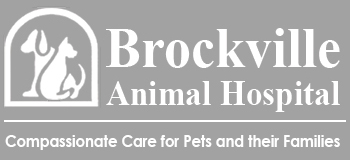Library
-
In the wild, prairie dogs burrow in the ground and make tunnels. Indoor caging must be long enough and deep enough whereby the pet has a chance to dig and make a borrow. Boxes and tubes large enough to crawl through make excellent additions to the cage.
-
Preanesthetic bloodwork is an important step in the evaluation of pets undergoing anesthesia or surgical procedures. Bloodwork can help diagnose a variety of internal disorders, many of which could negatively affect your pet's anesthetic and surgical safety. By diagnosing and treating any underlying medical disorders before surgery/anesthesia, your veterinarian can make anesthesia as safe as possible for your pet.
-
Next to you, the second most important person in a dog’s life is your veterinarian. Before actually going to the veterinary hospital, take practice car rides and be sure to properly restrain your dog in the car by placing him in a crate or harness. The very first visit to your veterinary clinic should be a fun introduction to a new place. When the actual appointment occurs, your dog will be checked in by the receptionist and the technician will gather vital information. Your veterinarian will then perform a comprehensive physical examination and give recommendations that are best for your dog.
-
Telemedicine is the act of practicing medicine from a distance and your appointment will be conducted by a licensed veterinarian. Before your appointment, gather information on your pet’s history and your current concern. Look at a calendar and write down a timeline of your pet’s problems. Be prepared to answer questions that you would normally be asked at an in-person appointment. Write notes to help you remember everything. Most telemedicine appointments involve the use of some type of video chat. Conduct your visit in a quiet area with good lighting and have your pet with you before the call starts. Not all concerns can be addressed through telemedicine. If your veterinarian is unable to arrive at a diagnosis via telemedicine, he or she can help you determine the next step for your pet to ensure that he or she receives optimal care.
-
Preparing your cat to travel to the vet is one of the most important investments you can make during the lifespan of your cat. Cats should visit the veterinary hospital at least once yearly. The smoother the experience goes, the least amount of stress both you and your cat will experience.
-
Winter cold weather poses several risks for our pets. This article outlines some of the key risks and how to avoid them, to keep your pet safe year-round.
-
Good hygiene takes practice, but starting early will make keeping your pup clean easier for his entire life. You can start some of these jobs shortly after your puppy arrives home. Be sure to keep a calm voice and use food rewards as positive conditioning to make it a positive experience.
-
When families shelter together for extended periods, as occurred during the COVID-19 pandemic, pets enjoy nearly constant companionship. As people resume an active lifestyle, pets are suddenly faced with being alone. They may experience distress related to this loss of companionship. Treatment is discussed, such as independence training and an incremental program of safe departures. If your pet shows continued signs of distress related to being alone, it is important to seek professional help to prevent escalation.
-
The American Animal Hospital Association and American Veterinary Medical Association have established guidelines to standardize preventive health care for cats, helping them to live longer, healthier lives. This handout provides an overview of the recommendations within these guidelines and why they are so important.
-
The American Animal Hospital Association and American Veterinary Medical Association have established guidelines to standardize preventive health care for dogs, helping them to live longer, healthier lives. This handout provides an overview of the recommendations within these guidelines and why they are so important.

